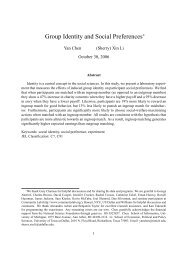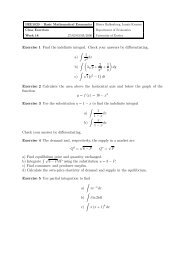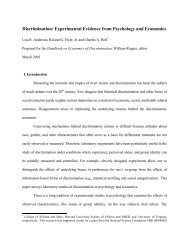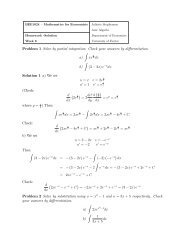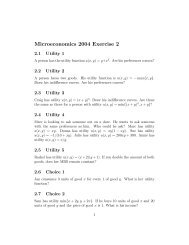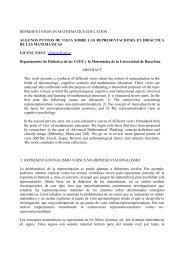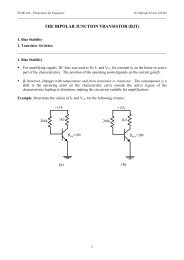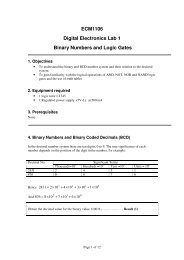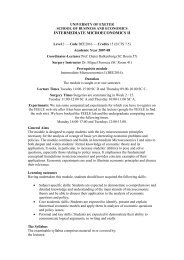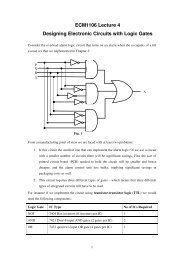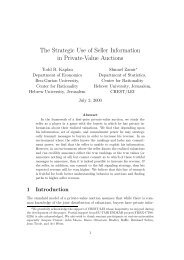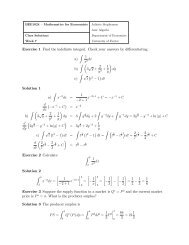FEEDBACK CONTROL SYSTEMS
FEEDBACK CONTROL SYSTEMS
FEEDBACK CONTROL SYSTEMS
Create successful ePaper yourself
Turn your PDF publications into a flip-book with our unique Google optimized e-Paper software.
ECM2105 - Control Engineering Dr Mustafa M Aziz (2013)________________________________________________________________________________Assuming that K t = 1 for simplicity:1/10T d(s)R(s)+−KV a(s)+−102s + 1.5Ω(s)K t= 1Steady-state error: T d = 0, R(s) = 1/s,1 ⎛ 2s + 1.5 ⎞E(s) = R(s) - Ω(s) = ⎜⎟s ⎝ 2s + 1.5 + 10 K ⎠1.5ess= limsE (s ) = . By choosing K = 15, e ss < 0.01, OK.s → 0 1.5 + 10 KDisturbance rejection: R(s) = 0, T d (s) = 1/s,−1Ω (s) =s(2s + 1.5 + 10K)Taking the inverse Laplace transform (or from final-value theorem): ω(∞) = -1/(1.5+10K),by choosing K = 20, |ω(∞)| < 0.005, OK.Time constant: 2/(1.5+10K), by choosing K = 1, T = 0.17 s, OK. From the above, we choose a suitable value K = 20.From the above study, it can be seen that the larger K, the better performance for a simple firstordersystem.Can we choose K very large?4.9. Problems with a very large gain KV a (s) = K[R(s) - Ω(s)] = KE(s), in the time domain v a (0) = Ke(0), the small error e(0) at thebeginning will lead to a large v a (0) since K is large.When K is big, the inductance L (which we ignored for simplicity) can not be neglected anymore. It will lead to a problem. Assume L = 1 mH, then the transfer function from V a to Ω is:Km(s) =(Ls + R)(Js + B) + K10=0.002s + 2s + 1.5G2mKbThe closed-loop transfer function with the proportional term K is:13



